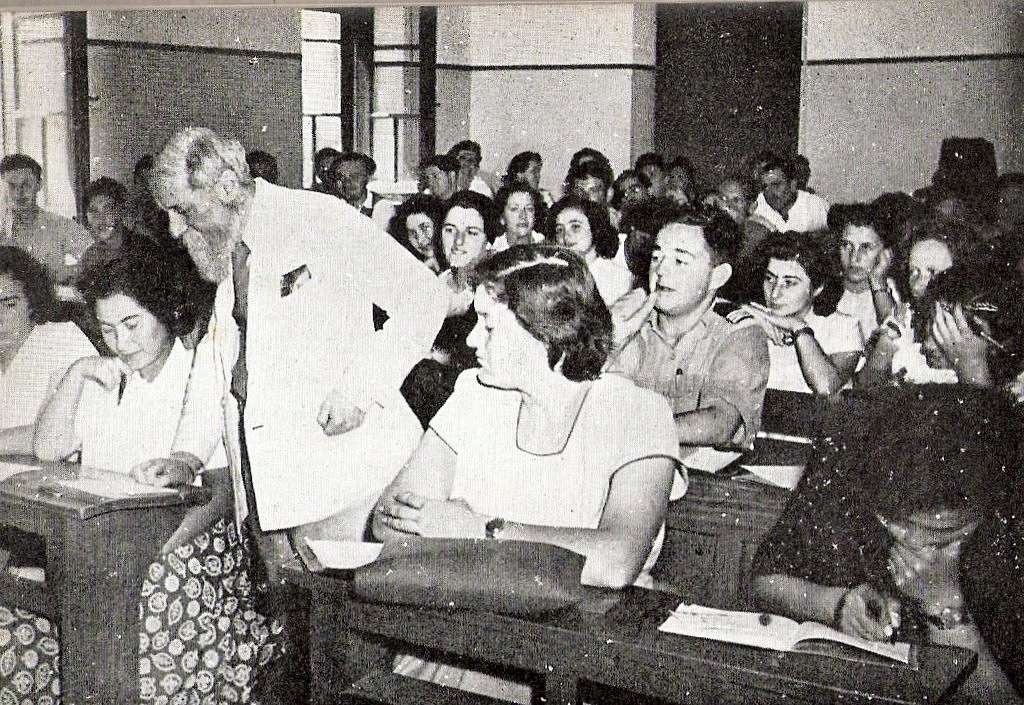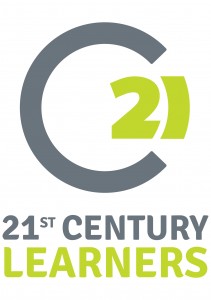Teaching and learning on Buber’s narrow ridge

Relationship educates
As they put to sea at the beginning of a new academic year, here’s a maxim that educators everywhere might like to hold tight to: relationship educates.
Relationship educates. Thanks for the truism! Relationship educates? What does that even mean? I came across the phrase while reading Kenneth Kramer’s ‘Learning through Dialogue’ in which he reflects on the relevance of Martin Buber’s teachings to modern education. Buber, an Austrian-Jewish scholar of the early to mid-twentieth century best known for his work ‘I and Thou’, believed that it is not the teacher alone, but the lived relationship between the teacher, the student and the text (the material to be studied) that educates.
The teacher has a role in bringing the student and the text into warm relationship. She must, of course, make the text accessible and comprehensible, but also meaningful – relevant to the student’s experience, interest and need. Through her, and her own deep relationship with it, the text comes to speak to the student.
And then the student needs to feel called out to speak to the text. What do you have to say to me? What here is of value? Have I understood you correctly? But what about this…? With experience, and if he listens carefully, the student may hear the text, or its authors, responding, but the response will more often be mediated by the teacher as she represents the subject matter, pointing the way to a richer understanding. Other students may add their voices to the dialogue (for a dialogue it now is) and it is this relationship, this dialogical exchange between student, teacher and text, that leads to knowledge and growth – it educates.
Inclusion
This kind of relationship may not be easy to achieve. The teacher’s deep appreciation of the text is foundational, but is insufficient without her understanding of the student and the student’s relationship with the subject matter. What is required, Buber suggests, is an act of ‘inclusion’ from the teacher in which she makes the student ‘present’. Kramer explains inclusion as ‘an act of imagining what the other person is thinking, feeling, and experiencing, without surrendering one’s own stand’. Easier said than done! Inclusion requires one person to ‘turn unreservedly’ toward the other – to listen deeply, not just to what they say, but to why they say it, to attend to the whole person, not just their words, and to accept the responsibility of responding to what emerges. It is an act that requires humility, as the teacher, however experienced, needs to accept the student as a partner in the knowledge-making process, and to accept the she too may learn and grow through this dialogic relationship.
Kramer offers us an example of inclusion in Buber’s classroom shared by one of his students:
‘At one point, he said something about his conception of creation which I did not fully understand. I raised my hand and he stopped talking and asked me what I wanted to say. “I would very much like to know what your conception of the creation of the world is,” I said. In a very beautiful Jewish way, he said to me: “What is creation for you?” I looked at him with surprise at the fact that he wanted to know from me what I wanted to know from him. “I think that creation is to be a part of what is happening, a part of creation”. And he shook his head and said: “No, no, no. It is to be together with creation”.’
The distinction between being a part of and being a part with is an important one in Buber’s philosophy (and one that this student said took him a long time to fully grasp), but we needn’t go into it here. The point to be made is that Buber was disposed to hear his student, to seek to understand the place from which his puzzlement came, and to meet him there.

I contrast this with an exchange between a new teacher and a six-year old pupil that I overheard recently. It went something like this:
Teacher: Can you remember some of the things we see in Summer?
Pupil: Bright colours
Teacher: Bright colours? Ok. What about the trees? Are they just beginning to bud, or are they in full leaf?
I asked the teacher why he hadn’t picked up on the pupil’s response. He said that he was worried that she was talking about spring flowers or Autumn leaves which would be wrong answers; his plan required him to cover the fact that the trees are in full leaf in summer. I apportion no blame to the teacher here – I have done this kind of thing a thousand times (and sometimes it’s well-justified), but it did make me think of Buber and wonder how this child felt when her answer wasn’t heard or valued – perhaps the opposite of ‘present’.
The narrow ridge
Pedagogies are sometimes dichotomised as being either student-centred (where the student’s subjective knowledge is central) or teacher / knowledge centred (where authoritative, objective knowledge is central). Buber urges us to teach and learn on the ‘narrow ridge’ where the subjective and the objective meet. Through the act of inclusion, the teacher (and the ‘objective’ subject knowledge she possesses) comes out to meet the student on the narrow ridge, and she calls him out to meet her there (there can be no guarantee, of course, that he will accept the invitation). Here their different perspectives are held together in tension; rather than confrontation, a dance of dialogue ensues in which both sides seek the same goal – a richer understanding of the text and of each other. The teacher resists the temptation to dominate the student – she makes him present – but at the same time she calls on him to think with care, offers gentle challenge and points the way to a richer understanding.
Lots has been written about dialogic teaching and learning that can guide us as to how to proceed once we arrive with the student on the narrow ridge (see the references to Alexander and to my own blog below) – the questioning techniques we can use to keep the dialogue open, for example – but perhaps less is written about how we find our way there, and surely that is the first step.
Perhaps the first thing to say is that we can’t (and we shouldn’t) teach from the narrow ridge all the time – it would be exhausting and we would surely fall off! And often an authoritative teaching style is called for. But getting there is not a matter following a clear map or a script, or of using certain kinds of questions. It is a matter of adopting a certain attitude or orientation towards one’s students and towards the subject matter – a way of being together with the students, and it’s a challenging path.
Some practical steps that might help us to find the way include:
- Practising inclusion when speaking with friends and family (or even when contemplating a book, landscape or object!). What does ‘turning unreservedly’ to another mean / feel like in practice? How can you attend to the whole person, rather than just the words they say? What can you do to ‘seek to understand’ them? Can you imagine what they are thinking and feeling? Can you hold their view in mind without losing sight of your own? Can you accept the responsibility of responding to any need that you find? This may sound trivial, but I for one don’t find it easy! Perhaps with deliberate practice, it becomes easier – more natural.
- Practising inclusion for short periods when listening to students in relaxed situations. Not thinking about what you might say next (the opposite of listening is preparing to speak!), or thinking about an impending break duty – just listening, and seeking to understand.
- I find the practice of Philosophy for Children (P4C) really helpful. Here the teacher is cast in the role of facilitator of the students’ thinking – of their dialogue, and all are charged with building a dialogic community. Everyone is encouraged to seek out and turn towards the other – everyone is invited onto the narrow ridge.
- If not P4C, a teacher could create short episodes in which she suspends the business of transmitting new information and instead focuses on trying to understand what sense(s) the students have made of what she has tried to teach (and then perhaps on facilitating a dialogue between students and the text, and on gently pointing the way to a richer understanding – see my posts ‘A teacher’s guide to dialogic pedagogy). Such sessions might be stimulated by a rich question or a contestable statement.
By modelling (and reflecting explicitly on the value of) deep listening to and acceptance of the other as a valuable source of learning, the teacher might succeed in helping students to develop these dispositions. With time, the class may find a way of being together in which forays onto the narrow ridge are welcome and commonplace. Approaches to oracy education and dialogic teaching and learning can then lead to a classroom in which dialogue can flourish.
So, this year I will practise extending an invitation to my students to join me out there on the ridge so that they – and I – can be educated by the relationship between me, them and our subject. It sounds precarious and I fear I may fall off more than once. But at least this is a metaphorical ridge, and the chasms (of over-reliance on the subjective or the objective) on either side are more forgiving than those flanking Blencathra’s edges! Why don’t you join me out there? That’s an invitation.
Bibliography
Alexander, R. (2020) ‘A Dialogic Teaching Companion’. Abingdon: Routledge
Buber, M. (2002) ‘Between Man and Man’. Abingdon: Routledge
Buber, M. (2004) ‘I and Thou’. London: Continuum
Kramer, K. P. (2013) ‘Learning through Dialogue: The Relevance of Martin Buber’s Classroom’. Plymouth: Rowman and Littlefield Education
Phillipson, N. (2020) ‘A Teacher’s Guide to Dialogic Pedagogy’. Available at http://21stcenturylearners.org.uk/?p=1337 (Accessed 6/9/23)


